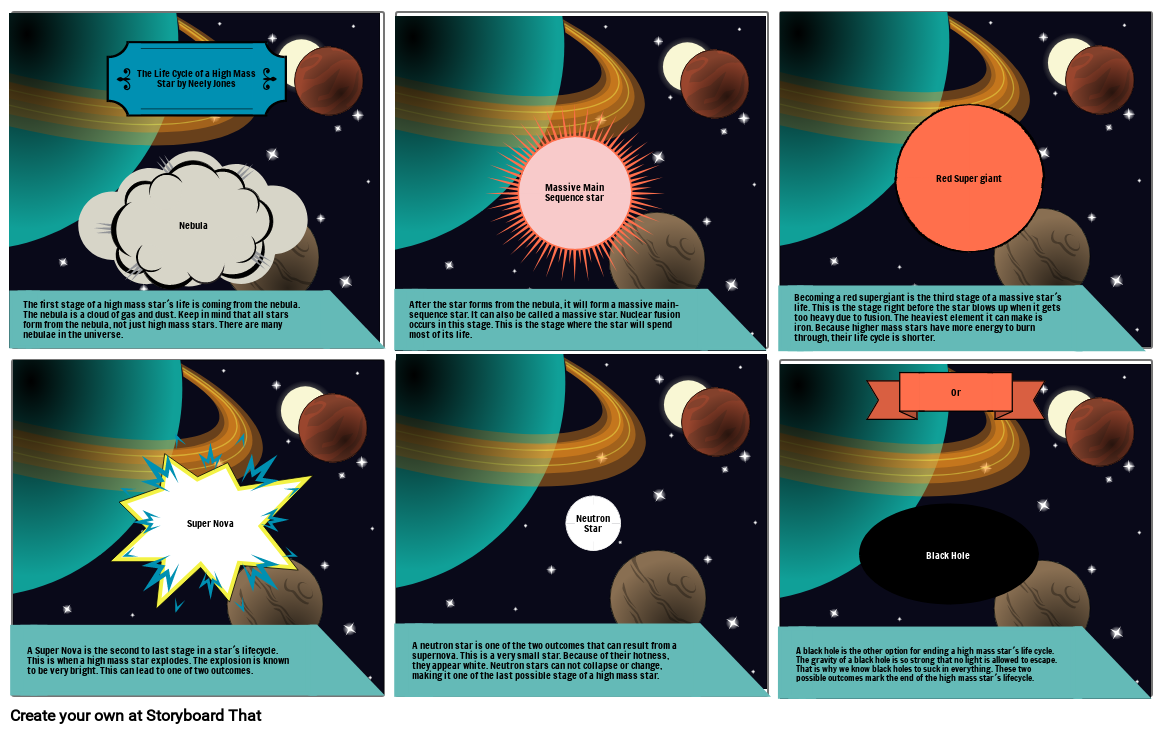Life of High Mass Star

Storyboard Text
- The first stage of a high mass star´s life is coming from the nebula. The nebula is a cloud of gas and dust. Keep in mind that all stars form from the nebula, not just high mass stars. There are many nebulae in the universe.
- Nebula
- The Life Cycle of a High Mass Star by Neely Jones
- After the star forms from the nebula, it will form a massive main-sequence star. It can also be called a massive star. Nuclear fusion occurs in this stage. This is the stage where the star will spend most of its life.
- Massive Main Sequence star
- Becoming a red supergiant is the third stage of a massive star´s life. This is the stage right before the star blows up when it gets too heavy due to fusion. The heaviest element it can make is iron. Because higher mass stars have more energy to burn through, their life cycle is shorter.
- Red Super giant
- A Super Nova is the second to last stage in a star´s lifecycle. This is when a high mass star explodes. The explosion is known to be very bright. This can lead to one of two outcomes.
- Super Nova
- A neutron star is one of the two outcomes that can result from a supernova. This is a very small star. Because of their hotness, they appear white. Neutron stars can not collapse or change, making it one of the last possible stage of a high mass star.
- Neutron Star
- A black hole is the other option for ending a high mass star´s life cycle. The gravity of a black hole is so strong that no light is allowed to escape. That is why we know black holes to suck in everything. These two possible outcomes mark the end of the high mass star´s lifecycle.
- Black Hole
- Or
Over 30 Million Storyboards Created

